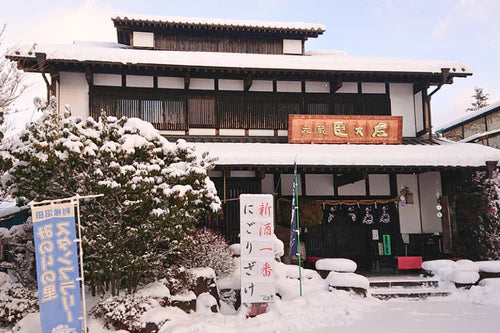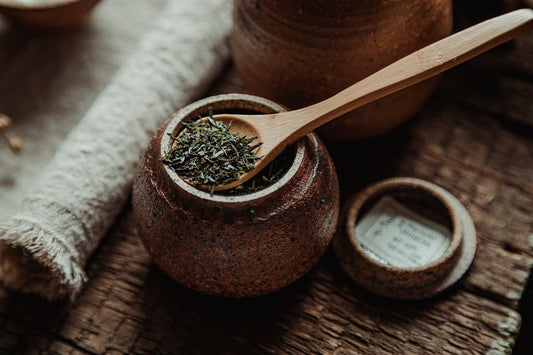Introduction
Japanese sake offers a variety of enjoyment tailored to each season. From the fresh sake of spring to the warm sake of winter, this article provides a detailed guide on choosing sake, along with pairing it with seasonal ingredients. Whether you're a sake novice or an enthusiast, this is a comprehensive guide to savoring the diverse world of Japanese sake throughout the four seasons.
SPRING

The Charm of New Sake
Spring marks the beginning of a new season, and with it comes the refreshing flavor of "new sake" in the world of Japanese sake. Served during this time, new sake embodies a fresh and fruity taste, reflecting the year's rice harvest. Enjoying this sake beneath cherry blossoms enhances the experience, capturing the essence of spring.
Pairing with Spring Ingredients
Spring brings an abundance of fresh vegetables and fish, offering unique pairing opportunities with new sake. Ingredients such as bamboo shoots and cherry trout, specific to the season, create exceptional combinations with new sake. For example, pairing fruity new sake with tender spring vegetable tempura provides an exquisite match that evokes the arrival of spring. Additionally, enjoying sake outdoors amidst cherry blossoms, known as "ohanami-zake" (cherry blossom viewing sake), is a distinctive Japanese way of celebrating the season. Choosing a light and smooth sake during this time complements the delicate flavors of the ingredients, allowing you to fully experience the essence of spring.
SUMMER

Chilled Sake in Summer
During the summer, the true essence of Japanese sake shines when served chilled. Summer sake, known for its refreshing coolness and crisp taste, is particularly recommended in the forms of junmai-shu (pure rice sake) and nama-zake (unpasteurized sake). Various regions in Japan offer sake with a refreshing taste to help combat the heat. Moreover, during summer festivals and fireworks events, enhancing the enjoyment of summer can be achieved by savoring local Japanese sake. The combination of the coolness, crispness, and local flavors makes chilled sake a delightful companion for summer festivities.
Compatibility with Refreshing Summer Dishes
During the summer, it's recommended to pair chilled Japanese sake with cool and refreshing dishes. Particularly, light dishes like chilled somen noodles or cold pasta complement chilled sake exceptionally well. Additionally, dishes featuring raw fish, such as sashimi or sushi, provide a refreshing taste that helps you forget the heat of summer. Choosing a crisp junmai-shu or nama-zake, chilled to perfection, enhances the flavors of the dishes while assisting in navigating through the hot summer days.
AUTUMN

Characteristics of "Hiyaoroshi"
In the fall, a seasonal limited edition of Japanese sake called "hiyaoroshi" makes its appearance. This sake undergoes maturation over the summer, resulting in a smooth and rich flavor profile. When selecting hiyaoroshi, it's important to check for the level of maturation and unique flavor characteristics. During autumn festivals and outings, you can enjoy hiyaoroshi with distinctive regional features, making a journey to savor local sake all the more enticing.
Pairing with Autumn Flavors
Autumn is often referred to as the season of increased appetite, as it brings about delicious seasonal ingredients. Representative autumn ingredients include mushrooms, chestnuts, and sweet potatoes, all of which pair well with hiyaoroshi and matured sake. Additionally, pairing hiyaoroshi with seasonal fish dishes like salt-grilled sanma (Pacific saury) enhances the depth of flavors, allowing you to savor a richer taste experience.
WINTER

Warming Up with Hot Sake
In winter, the yearning for hot sake becomes undeniable. Indeed, there's nothing like the warmth of hot sake to ward off the cold during this season. Hot sake accentuates the aroma of the drink, allowing for the enjoyment of a deep and rich flavor that brings warmth to winter nights. When indulging in hot sake, temperature management is crucial, with the optimal temperature varying depending on the type of sake. For instance, junmai ginjo is best enjoyed at a slightly lower temperature, while junmai-shu may be more enjoyable at a slightly higher temperature. Additionally, enjoying hot sake in a winter hot spring resort provides a blissful moment to unwind, healing the fatigue of the journey and warming both body and soul.
Pairing with Warm Winter Dishes
The combination of hot sake and warm dishes is a match made in heaven for alleviating the winter chill. Hot pot dishes, in particular, harmonize well with hot sake, making them ideal for warming up on cold nights. Traditional winter dishes such as simmered dishes and udon also enhance the flavors of sake. Choosing sake known for its warming effect during this season adds a touch of warmth to the long winter nights, creating a cozy and inviting atmosphere.
SUMMARY
From the fresh sake of spring to the warm sake of winter, each season brings its own unique flavor and enjoyment when it comes to Japanese sake. There's nothing quite like the ability of sake, as a single type of beverage, to evoke the essence of each season. Pairing sake with seasonal ingredients, experiencing sake at festivals and events, it all allows you to simultaneously savor the changing seasons and the rich culture of Japan. The world of sake offers a delightful journey through the diverse nuances of each season, making it a truly special and culturally rich experience.





